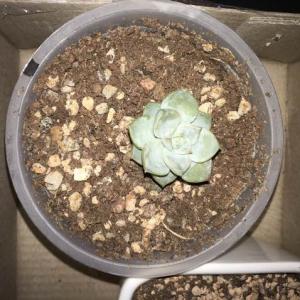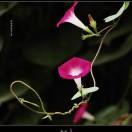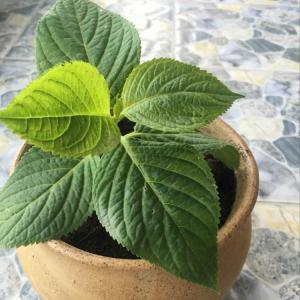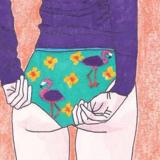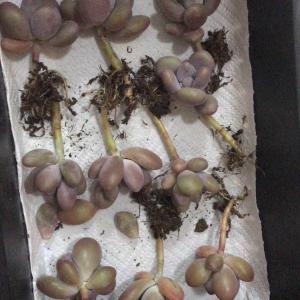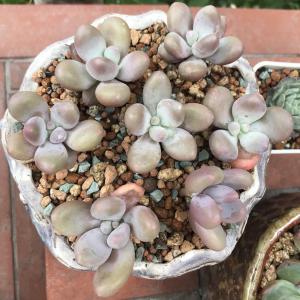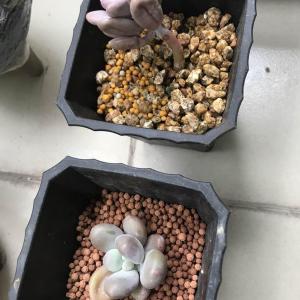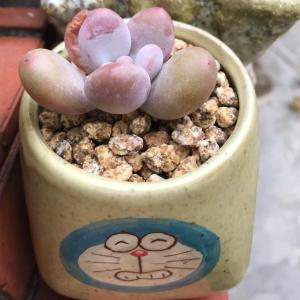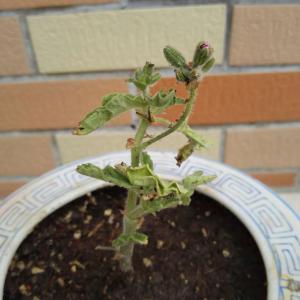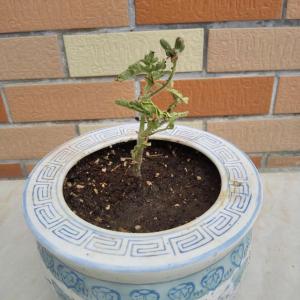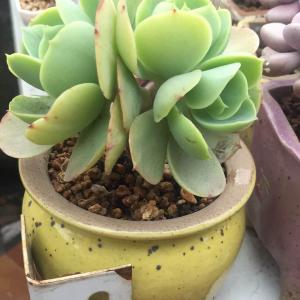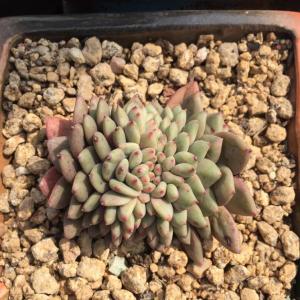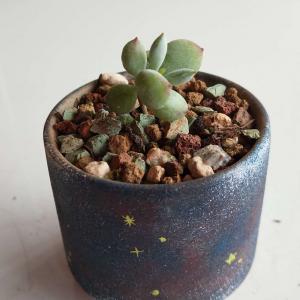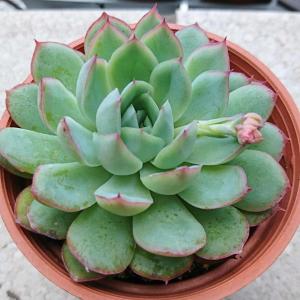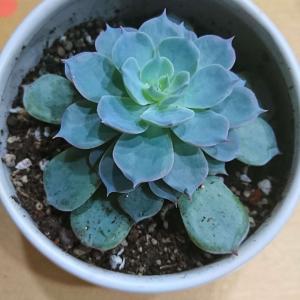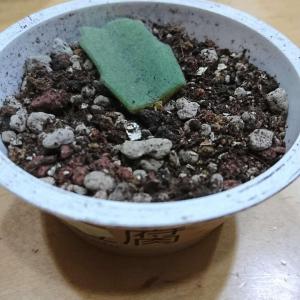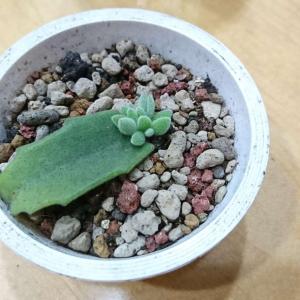求助
Yokixu
2018年04月08日
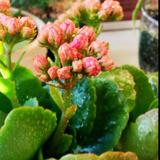
图1是现在的状态,有点徒长,没有花苞,要掐头吗?图2是秋天开花的时候

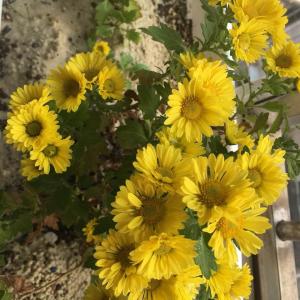


0
0
Yokixu:@sunnyzou 谢谢!这种春天会开花吗
sunnyzou:菊花可爱活啦。都行。你要是不想要那么徒就打头,开花晚些,但是会促发侧枝,分枝多将来花量也大。
文章
Miss Chen
2018年04月06日

Description: This perennial wildflower is 1-4' tall. Initially, evergreen basal leaves are produced, forming a rosette about 4-6" across; these leaves develop during the late fall and persist into the spring. Later, a central stem develops that becomes branched in the upper half. Both the central and lateral stems are terete and evenly pubescent. Along each stem, there are alternate leaves up to 4" long and 2½" across. These leaves are variable in shape: the lower leaves are cordate to ovate-cordate (like the basal leaves), the middle leaves are ovate-cordate to lanceolate, while the upper leaves are linear to short and scale-like. The alternate leaves become smaller in size as they ascend the stems. They are dull medium green, sparsely short-canescent on their upper surfaces, and more densely short-pubescent on their upper surfaces. The margins of the leaves are usually smooth, although some leaves may be sparsely dentate-crenate.

The central stem terminates in a panicle of flowerheads that is about twice as long as it is across; the stronger upper stems often produce smaller panicles of flowerheads. The collective weight of these flowerheads often causes the entire plant to lean partially sideways. Each daisy-like flowerhead is ¾–1¼" across, consisting of 20-35 rays florets and a similar number of disk florets. Depending on the local genotype of the plant, some flowerheads may have up to 50 ray florets, but this is less common. The ray florets of the flowers are usually blue-violet, but sometimes they are white. The disk florets are yellow, but become more orange-red colored with age. At the base of each flowerhead, there are several series of strongly recurved floral bracts. These bracts are linear-lanceolate in shape and usually finely pubescent. The blooming period occurs from late summer into the fall and lasts about 1-2 months. Usually, several flowers are in bloom at the same time. There is no noticeable floral scent. Each disk or ray floret is replaced by a small achene that is narrowly obovoid. At the apex of each achene, there is a small tuft of tawny hairs. These achenes are distributed by the wind. The root system is fibrous and short-rhizomatous. Older plants may produce a small caudex. Vegetative offsets can develop from the rhizomes.

Cultivation: The preference is partial sun, mesic to dry conditions, and soil containing clay-loam or rocky-loam. Decaying organic material is beneficial to growth and helps to retain moisture. Like other woodland asters, this species often leans over to one side when it flowers.
Range & Habitat: The native Many-Rayed Aster is largely restricted to west-central and south-west Illinois, where it is uncommon to occasional (see Distribution Map). Elsewhere in the state, it is absent. This species is endemic to the mid-section of the United States, where it is found primarily in Arkansas, Missouri, and Illinois. Habitats include upland oak woodlands, upland oak savannas, thinly wooded bluffs along major rivers, partially shaded cliffs, rocky ledges, and various kinds of glades (limestone, sandstone, chert, etc.). This aster is fairly conservative ecologically, but it will adapt to minor levels of disturbance and probably benefits from occasional wildfires.
Faunal Associations: The nectar and pollen of the flowers attract a variety of insects, including long-tongued bees, short-tongued bees, Syrphid flies, bee flies, and small- to medium-sized butterflies. A specialist pollinator of asters is the bee Andrena simplex. Many insects feed on various parts of asters (leaves, flowerheads, stems, etc.), including the caterpillars of the butterflies Chlosyne nycteis (Silvery Checkerspot) and Phyciodes tharos (Pearl Crescent); other species are listed in the Moth Table (moths & butterflies) and the Insect Table (primarily aphids, leaf beetles, & plant bugs). The Ruffed Grouse and Wild Turkey feed on the leaves, flowerheads, and seeds of asters (especially those species occurring in woodlands and savannas). Mammals feeding on asters include the White-Tailed Deer (foliage), Cottontail Rabbit (foliage), and White-Footed Mouse (seeds). Asters help to provide cover for wildlife.

Photographic Location: The wildflower garden of the webmaster in Urbana, Illinois.
Comments: There are many aster species in Illinois (over 35), and this is one of the less common species. In many ways, Many-Rayed Aster resembles the more common Symphyotrichum drummondii (Drummond's Aster), but the former has larger flowerheads (at least ¾" across) with strongly recurved floral bracts. In contrast, Drummond's Aster (and many other woodland/savanna asters) has flowerheads about ½–¾" across and straight floral bracts. As the common name suggests, Many-Rayed Aster has abundant ray florets (20-35 or more), while other woodland/savanna asters typically have 10-20 ray florets. I am somewhat partial to Many-Rayed Aster because it is easy to grow, the flowerheads are a little larger in size, and they are usually more showy than the flowerheads of other woodland/savanna asters. A scientific synonym of this species is Aster anomalus, and another common name is Cliff Aster.

The central stem terminates in a panicle of flowerheads that is about twice as long as it is across; the stronger upper stems often produce smaller panicles of flowerheads. The collective weight of these flowerheads often causes the entire plant to lean partially sideways. Each daisy-like flowerhead is ¾–1¼" across, consisting of 20-35 rays florets and a similar number of disk florets. Depending on the local genotype of the plant, some flowerheads may have up to 50 ray florets, but this is less common. The ray florets of the flowers are usually blue-violet, but sometimes they are white. The disk florets are yellow, but become more orange-red colored with age. At the base of each flowerhead, there are several series of strongly recurved floral bracts. These bracts are linear-lanceolate in shape and usually finely pubescent. The blooming period occurs from late summer into the fall and lasts about 1-2 months. Usually, several flowers are in bloom at the same time. There is no noticeable floral scent. Each disk or ray floret is replaced by a small achene that is narrowly obovoid. At the apex of each achene, there is a small tuft of tawny hairs. These achenes are distributed by the wind. The root system is fibrous and short-rhizomatous. Older plants may produce a small caudex. Vegetative offsets can develop from the rhizomes.

Cultivation: The preference is partial sun, mesic to dry conditions, and soil containing clay-loam or rocky-loam. Decaying organic material is beneficial to growth and helps to retain moisture. Like other woodland asters, this species often leans over to one side when it flowers.
Range & Habitat: The native Many-Rayed Aster is largely restricted to west-central and south-west Illinois, where it is uncommon to occasional (see Distribution Map). Elsewhere in the state, it is absent. This species is endemic to the mid-section of the United States, where it is found primarily in Arkansas, Missouri, and Illinois. Habitats include upland oak woodlands, upland oak savannas, thinly wooded bluffs along major rivers, partially shaded cliffs, rocky ledges, and various kinds of glades (limestone, sandstone, chert, etc.). This aster is fairly conservative ecologically, but it will adapt to minor levels of disturbance and probably benefits from occasional wildfires.
Faunal Associations: The nectar and pollen of the flowers attract a variety of insects, including long-tongued bees, short-tongued bees, Syrphid flies, bee flies, and small- to medium-sized butterflies. A specialist pollinator of asters is the bee Andrena simplex. Many insects feed on various parts of asters (leaves, flowerheads, stems, etc.), including the caterpillars of the butterflies Chlosyne nycteis (Silvery Checkerspot) and Phyciodes tharos (Pearl Crescent); other species are listed in the Moth Table (moths & butterflies) and the Insect Table (primarily aphids, leaf beetles, & plant bugs). The Ruffed Grouse and Wild Turkey feed on the leaves, flowerheads, and seeds of asters (especially those species occurring in woodlands and savannas). Mammals feeding on asters include the White-Tailed Deer (foliage), Cottontail Rabbit (foliage), and White-Footed Mouse (seeds). Asters help to provide cover for wildlife.

Photographic Location: The wildflower garden of the webmaster in Urbana, Illinois.
Comments: There are many aster species in Illinois (over 35), and this is one of the less common species. In many ways, Many-Rayed Aster resembles the more common Symphyotrichum drummondii (Drummond's Aster), but the former has larger flowerheads (at least ¾" across) with strongly recurved floral bracts. In contrast, Drummond's Aster (and many other woodland/savanna asters) has flowerheads about ½–¾" across and straight floral bracts. As the common name suggests, Many-Rayed Aster has abundant ray florets (20-35 or more), while other woodland/savanna asters typically have 10-20 ray florets. I am somewhat partial to Many-Rayed Aster because it is easy to grow, the flowerheads are a little larger in size, and they are usually more showy than the flowerheads of other woodland/savanna asters. A scientific synonym of this species is Aster anomalus, and another common name is Cliff Aster.
0
0
文章
Miss Chen
2018年04月06日

Description: This perennial wildflower is 1-5' tall and either unbranched or sparingly so. The central stem is erect, terete, densely hairy or pubescent, and light green to brownish red. The alternate leaves are up to 4" long and 1½" across; they are ovate, narrowly ovate, ovate-lanceolate, or ovate-oblanceolate in shape with crenate-serrate margins. The upper surfaces of the leaves are deeply indented by pinnate veins; this characteristic provides them with a somewhat wrinkled appearance. Additionally, the upper surfaces of the leaves are slightly pubescent to hairless, medium to dark green, and usually dull-colored. The central stem terminates in a panicle of yellow flowerheads of variable shape and size. Small plants often have narrow panicles that resemble racemes, while large plants often have broad panicles with spreading-recurved branches. The upper stems of some large plants may produce panicles that are smaller than that of the central stem.

Each yellow flowerhead spans about 1/8" (3 mm.) across, consisting of 4-8 ray florets and a similar number of tubular disk florets. The base of each flowerhead consists of overlapping scale-like bracts that are yellowish-green. The branches of larger panicles often have small leafy bracts. The blooming period can occur from mid-summer into the fall and lasts about 1-2 months. Each fertile floret is replaced by a small bullet-shaped achene with a short tuft of hairs at its apex. The root system is fibrous and rhizomatous. Vegetative colonies of plants are often formed by the spreading rhizomes.
Cultivation: The preference is full sun to light shade, moist conditions, and soil that is sandy, loamy, or gravelly with a slightly acid pH.
Range & Habitat: The native Wrinkled-Leaved Goldenrod occurs primarily in the southwest corner of Illinois, where it is uncommon. Elsewhere in the state, it is rare or absent (see Distribution Map). Illinois lies at the NW range limit of this species. Habitats include low open woodlands, thickets, sandy swamps, wet sandy prairies, sandy banks of marshes, acid gravelly seeps, sand dunes, and rocky bluffs or cliffs. Usually, this goldenrod is found in moist areas that are sandy or where sandstone is close to the ground surface. Sometimes it is found in gardens, although some cultivars of this species bear little resemblance to the native plants.
Faunal Associations: The nectar and pollen of the flowers attract a wide variety of insects, including small bees, wasps, flies, small butterflies, skippers, and beetles. The caterpillars of many moth species feed on various parts of goldenrods (see Moth Table), while several leaf beetles (Chrysomelidae) feed primarily on the foliage (see Leaf Beetle Table). Other insects that feed on goldenrods include various plant bugs, stink bugs, lace bugs, treehoppers, and leafhoppers; the Bug Table lists some of these species. Insectivorous birds benefit indirectly from goldenrods because of the numerous insects that they attract. Other birds feed directly on goldenrods to a minor extent, including the Indigo Bunting (seeds), Eastern Goldfinch (seeds), Swamp Sparrow (seeds), Ruffed Grouse (leaves), and Greater Prairie Chicken (leaves). White-Tailed Deer and Cottontail Rabbits feed on young foliage to a limited extent, while Meadow Voles eat both the seeds and foliage.
Photographic Location: A sandy bank along a marsh at Jasper-Pulaski Fish and Wildlife Area in northwestern Indiana. The photographed plant is a dwarf (about 1½' tall) that may have been mowed earlier in the year.
Comments: Across it range in the eastern United States, this goldenrod is somewhat variable in appearance. Nonetheless, Wrinkle-Leaved Goldenrod can be distinguished from other goldenrods as follows: 1) the central stem is quite hairy or pubescent, 2) the upper surfaces of the leaves have a wrinkled appearance because of the indentations of their pinnate veins, and 3) individual leaves lack 3 prominent veins that run parallel to each other. This latter characteristic is typical of Solidago canadensis (Canada Goldenrod), Solidago gigantea (Giant Goldenrod), and similar goldenrods. Two other species, Solidago ulmifolia (Elm-Leaved Goldenrod) and Solidago patula (Swamp Goldenrod), have stems that are glabrous or only slightly hairy and their leaves tend to be more thin in texture and shiny than those of Wrinkle-Leaved Goldenrod. Other common names of Solidago rugosa include 'Rough-Stemmed Goldenrod,' 'Rough Goldenrod,' and 'Rough-Leaved Goldenrod.'

Each yellow flowerhead spans about 1/8" (3 mm.) across, consisting of 4-8 ray florets and a similar number of tubular disk florets. The base of each flowerhead consists of overlapping scale-like bracts that are yellowish-green. The branches of larger panicles often have small leafy bracts. The blooming period can occur from mid-summer into the fall and lasts about 1-2 months. Each fertile floret is replaced by a small bullet-shaped achene with a short tuft of hairs at its apex. The root system is fibrous and rhizomatous. Vegetative colonies of plants are often formed by the spreading rhizomes.
Cultivation: The preference is full sun to light shade, moist conditions, and soil that is sandy, loamy, or gravelly with a slightly acid pH.
Range & Habitat: The native Wrinkled-Leaved Goldenrod occurs primarily in the southwest corner of Illinois, where it is uncommon. Elsewhere in the state, it is rare or absent (see Distribution Map). Illinois lies at the NW range limit of this species. Habitats include low open woodlands, thickets, sandy swamps, wet sandy prairies, sandy banks of marshes, acid gravelly seeps, sand dunes, and rocky bluffs or cliffs. Usually, this goldenrod is found in moist areas that are sandy or where sandstone is close to the ground surface. Sometimes it is found in gardens, although some cultivars of this species bear little resemblance to the native plants.
Faunal Associations: The nectar and pollen of the flowers attract a wide variety of insects, including small bees, wasps, flies, small butterflies, skippers, and beetles. The caterpillars of many moth species feed on various parts of goldenrods (see Moth Table), while several leaf beetles (Chrysomelidae) feed primarily on the foliage (see Leaf Beetle Table). Other insects that feed on goldenrods include various plant bugs, stink bugs, lace bugs, treehoppers, and leafhoppers; the Bug Table lists some of these species. Insectivorous birds benefit indirectly from goldenrods because of the numerous insects that they attract. Other birds feed directly on goldenrods to a minor extent, including the Indigo Bunting (seeds), Eastern Goldfinch (seeds), Swamp Sparrow (seeds), Ruffed Grouse (leaves), and Greater Prairie Chicken (leaves). White-Tailed Deer and Cottontail Rabbits feed on young foliage to a limited extent, while Meadow Voles eat both the seeds and foliage.
Photographic Location: A sandy bank along a marsh at Jasper-Pulaski Fish and Wildlife Area in northwestern Indiana. The photographed plant is a dwarf (about 1½' tall) that may have been mowed earlier in the year.
Comments: Across it range in the eastern United States, this goldenrod is somewhat variable in appearance. Nonetheless, Wrinkle-Leaved Goldenrod can be distinguished from other goldenrods as follows: 1) the central stem is quite hairy or pubescent, 2) the upper surfaces of the leaves have a wrinkled appearance because of the indentations of their pinnate veins, and 3) individual leaves lack 3 prominent veins that run parallel to each other. This latter characteristic is typical of Solidago canadensis (Canada Goldenrod), Solidago gigantea (Giant Goldenrod), and similar goldenrods. Two other species, Solidago ulmifolia (Elm-Leaved Goldenrod) and Solidago patula (Swamp Goldenrod), have stems that are glabrous or only slightly hairy and their leaves tend to be more thin in texture and shiny than those of Wrinkle-Leaved Goldenrod. Other common names of Solidago rugosa include 'Rough-Stemmed Goldenrod,' 'Rough Goldenrod,' and 'Rough-Leaved Goldenrod.'
0
0
成长记
ICYC
2018年04月06日

2017
11/7 圖一:看到側芽長那個地方其實我是有點崩潰的...
2018
1/15圖二三:長大的側芽
2/28圖四五:我說你是不是又從旁邊冒芽了?側芽一都這麼大了呢
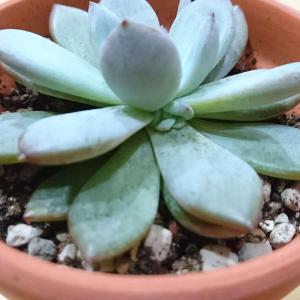
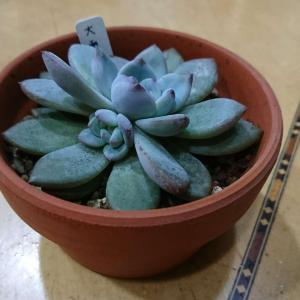
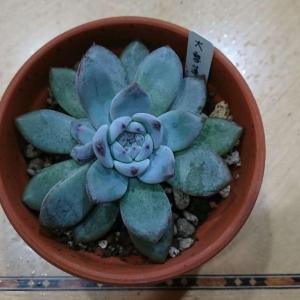

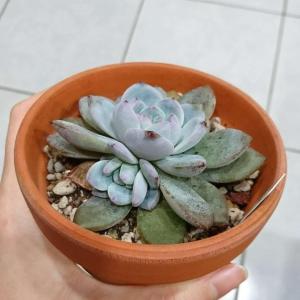
11/7 圖一:看到側芽長那個地方其實我是有點崩潰的...
2018
1/15圖二三:長大的側芽
2/28圖四五:我說你是不是又從旁邊冒芽了?側芽一都這麼大了呢





0
0
ICYC:2018
1/15圖二三:側芽長大
2/28圖四五:我說你又從哪冒頭了呢?側芽一號都長這麼大了





